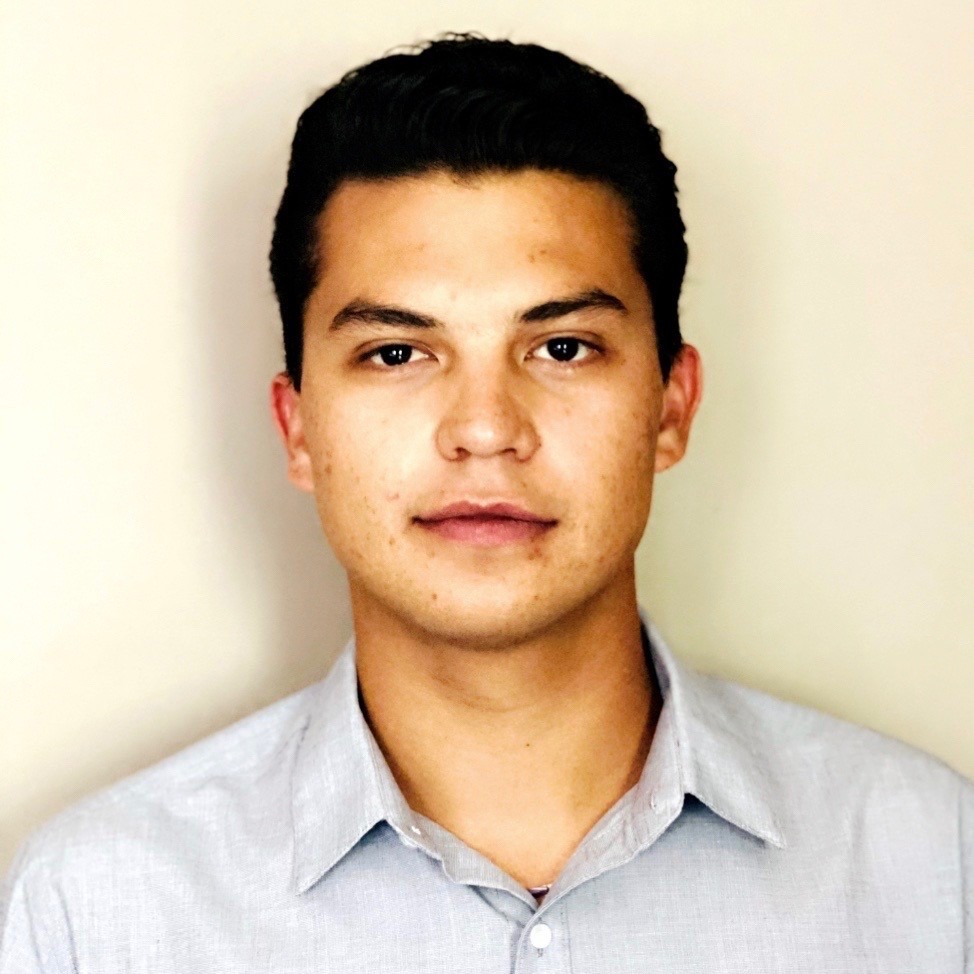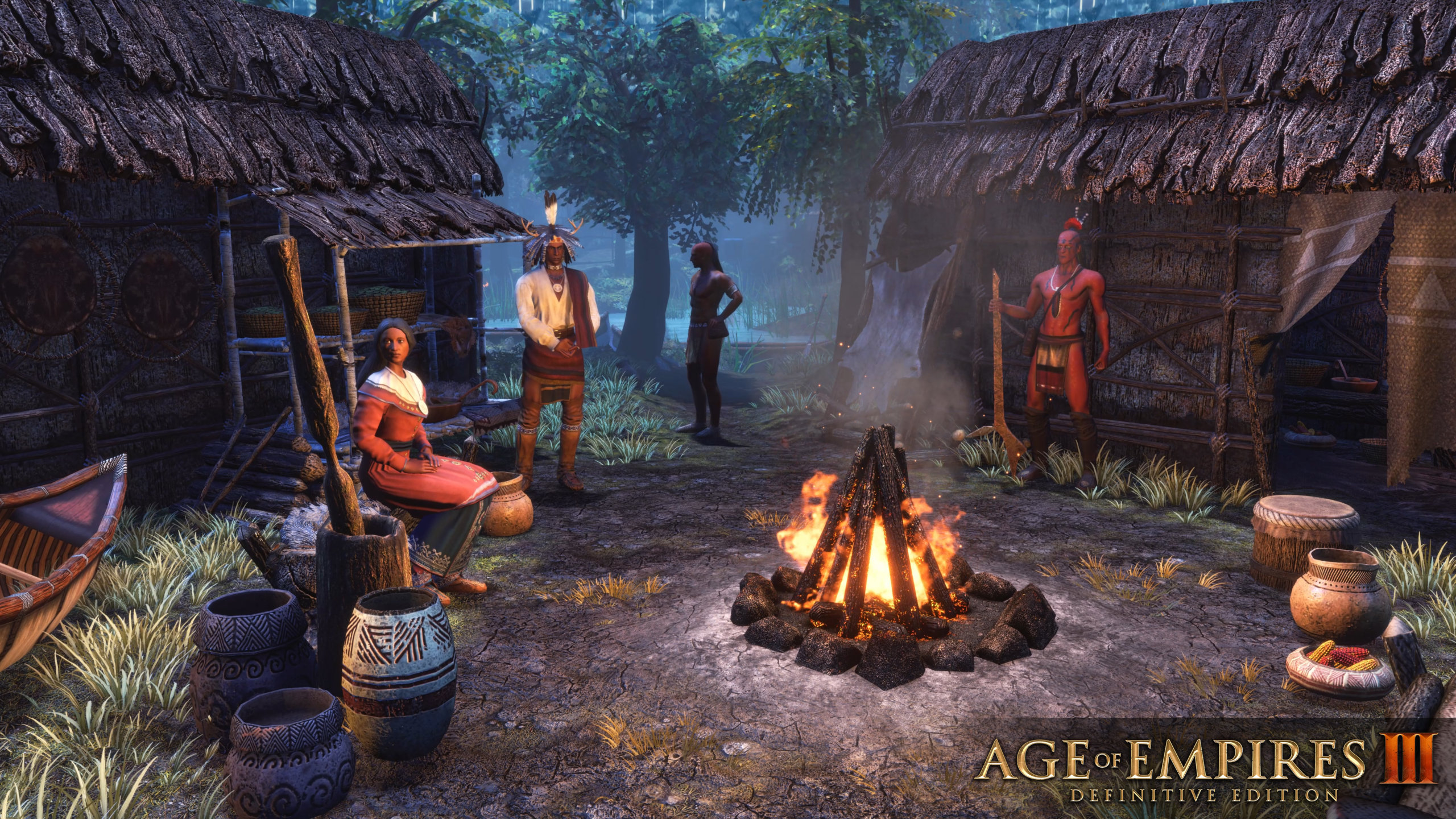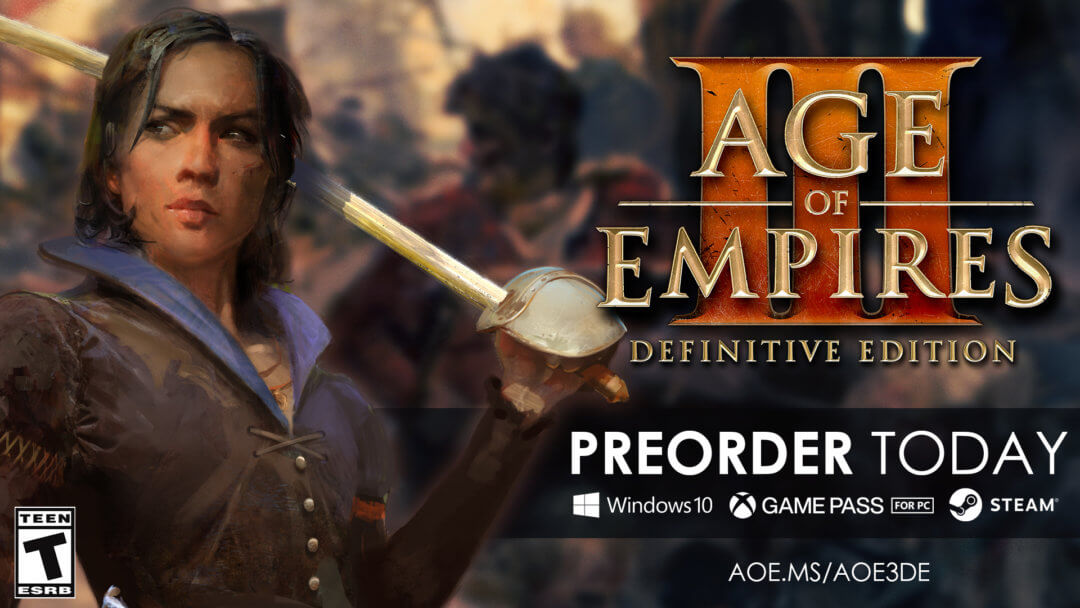
Ro’nikonhkátste Norton
In our ongoing deep-dive dev diaries of Age of Empires III: Definitive Edition, we’re excited to introduce a First Nations consultant to the community: Ro’nikonhkátste Norton of the Kahnawake Mohawk Nation, and member of the Haudenosaunee* (or “People of the Longhouse”) from Quebec, Canada!
* [Note: A lot of Age fans have asked us how to pronounce Haudenosaunee; Ro’nikonhkátste has told us that the correct phonetic version is: “Ha-di-no-shoe-knee”]
The World’s Edge team worked closely with Ro’nikonhkátste to not only translate the language of the Haudenosaunee (Six Nation Iroquois Confederacy) civilization in Age of Empires III: Definitive Edition, but contributed his own voice to the game as the male villager unit for the Haudenosaunee civ!
So without further ado, check out this insightful interview with Ro’nikonhkátste!
♦ ♦ ♦
WORLD’S EDGE: How did you come to work with the Age of Empires team? Have you played the Age games before?
RO’NIKONHKÁTSTE NORTON: A friend and co-worker of mine who had done prior work on the project recommended me. I suppose he felt that as a language instructor, I would be able to assist in the work that needed to be done—in terms of language and culture. I actually haven’t played Age of Empires, so it was interesting to learn about the game and how to best adapt the Haudenosaunee aspects to fit the context.
WORLD’S EDGE: You’ve been kind enough to educate us about the Haudenosaunee people. Could you share some of your history with us?
RO’NIKONHKÁTSTE NORTON: The Haudenosaunee Confederacy was originally comprised of five nations:
- Kanien’kehá:ka (Mohawk)
- Oneniote’á:ka (Oneida)
- Ononta’kehá:ka (Onondaga)
- Kaion’kehá:ka (Cayuga)
- Shotinon’towane’á:ka (Seneca), who were later joined by Tehatiskaró:ros (Tuscarora) to become six nations.
Our homelands are in what is now called New York State, Quebec, and Ontario.

Definitive Edition Haudenosaunee Home City
WORLD’S EDGE: What does your name, Ro’nikonhkátste, mean?
RO’NIKONHKÁTSTE NORTON: It translates to something like “he has a resilient mind” in English. Personal names were actually something that I had to work on in the game, as they hadn’t accurately reflected the structure of our names. Typically, our names will have a pronoun, a noun, and an adjective—although there are other constructions for names as well.
* [Note from World’s Edge: The character name Kanyenke was changed to Ká:nien in the Definitive Edition because Kanyenke was a location name rather than a person’s name. Ká:nien, however, means “flint” in Haudenosaunee.]
WORLD’S EDGE: We’re so pleased that the Haudenosaunee language is now properly represented in the game.
WORLD’S EDGE: How many native speakers are there today, and is the language still used in day-to-day life? What are some of the challenges when it comes to preserving your language?
RO’NIKONHKÁTSTE NORTON: Well, the speaker population varies for each language and community, so I can only speak on behalf of my community.
At the last estimate, there were a little over 200 first-language speakers. We’ve been engaged in language revitalization for quite some years now—however, as you can imagine, the biggest challenge we face is living in an English-speaking world and being surrounded by the English language. Every day is filled with challenges, but it’s also filled with successes. We’re trying our hardest to keep our language alive for the future generations, and being a part of that is an honor.
WORLD’S EDGE: How does it feel knowing that your voice will be heard by players around the world, with many hearing the Haudenosaunee Confederacy language being spoken for the first time?
RO’NIKONHKÁTSTE NORTON: It’s a pretty cool feeling, but I’m just happy that the language is now accurately pronounced and represented.
Male Haudenosaunee Villager
WORLD’S EDGE: First Nations voice artist, Teyútkw^, plays the female Haudenosaunee Villager:
Female Haudenosaunee Villager
WORLD’S EDGE: What was the experience of recording like?
RO’NIKONHKÁTSTE NORTON: It was fun. I’ve done a bit of studio work before for different projects and I always enjoy it, even though it can be a little nerve-wracking at first!
WORLD’S EDGE: Is there anything you’d like to communicate directly to people who will be playing the new and improved First Nations content in Age of Empires III: Definitive Edition?
RO’NIKONHKÁTSTE NORTON: The content has been changed to be more accurate and representative of my people’s language, history, and culture. Often Indigenous peoples are assumed to be one people who all fit the stereotype, but that is clearly not the case. We all have our own history, language, culture, and worldview that makes us unique to who we are, so I would encourage anyone who’s interested to learn as much as they can in order to break the stereotypes. I hope everyone enjoys the game!
You can learn more by visiting the The Kanien’kehá:ka Onkwawén:na Raotitióhkwa Language and Cultural Center.

Haudenosaunee campfire cinematic
♦ ♦ ♦
We’d like to thank Ro’nikonhkátste Norton for taking the time to chat with us and for his integral role in the game. Remember to pre-order Age of Empires III: Definitive Edition to meet the Haudenosaunee civilization!
